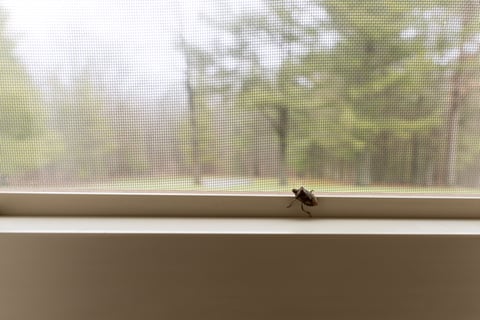Thanks to our unpredictable New England winters, we here at Burgess Pest get a lot of calls about stink bugs. Our weather can oscillate from 50 degrees and sunny to freezing with six inches of snow at the drop of a hat, confusing overwintering insects like stink bugs. One minute they're desperately trying to get inside to survive winter, the next, they think it's springtime again and they want to get out.
Odds are, you've encountered stink bugs - or more formally, brown marmorated stink bugs - in your Lexington, MA home, but you may not know much about them.

North America is blessed with more than 200 species of stink bug, but the brown marmorated stink but is one of the most common in Massachusetts.
These stink bugs are an invasive species accidentally introduced to the United States from Asia in the 1990s. They have a grey-brown, shield-shaped body with “marbled” or flecked markings. The aptly-named stink bug emits an unpleasant odor when threatened.
Despite their, uh, pungent aroma, this herbivore is relatively harmless while seeking shelter in warm spots during cold weather. The agricultural industry, on the other hand, considers them a major problem. Large infestations have decimated crops and cost farmers millions, but stink bugs are not entering your home to devour your freshly-bought produce or houseplants.
Stink bugs seek warmth as temperatures drop and will enter your home through an open door, a loose window screen, or cracks in baseboards and siding. It is most common to spot them inside as temperatures begin to fall, and again as spring breaks, when they would prefer to be outside.
Because of their unpleasant defense mechanism, it can be tricky to self-treat a stink bug problem. While catch-and-release (carefully!), vacuuming or flushing them can be effective if you're seeing them sporadically, professional help may be necessary if you're struggling to keep up. Call or email Burgess for a free estimate and let us sniff out the source of the problem.


